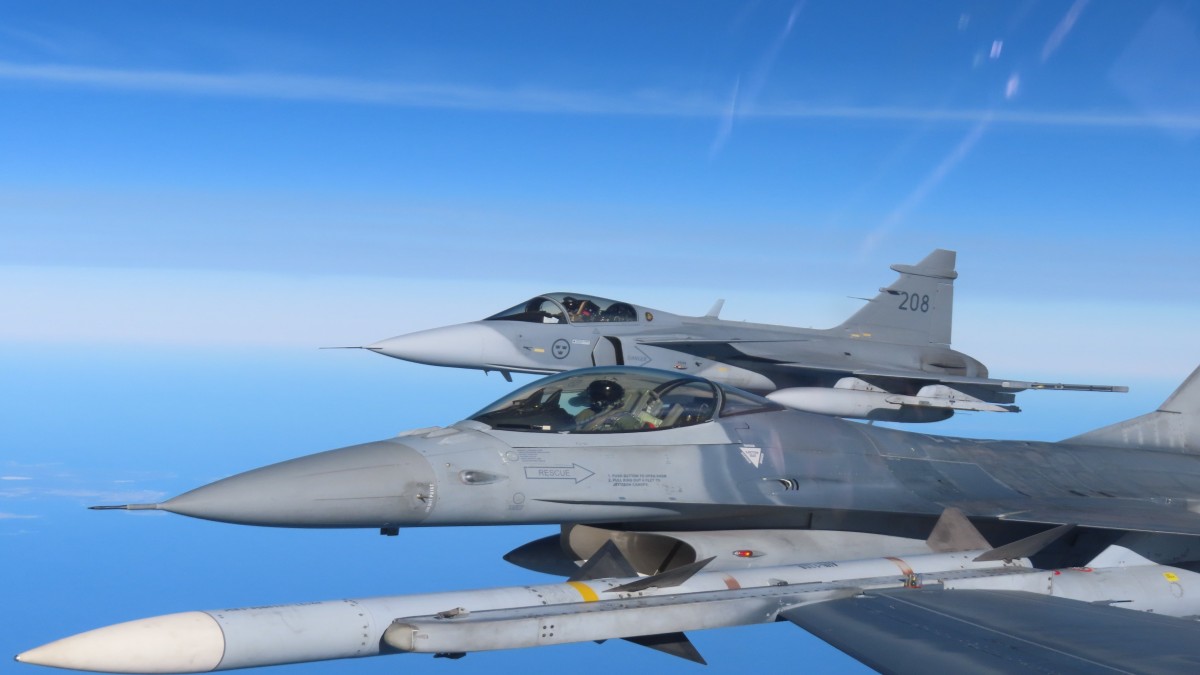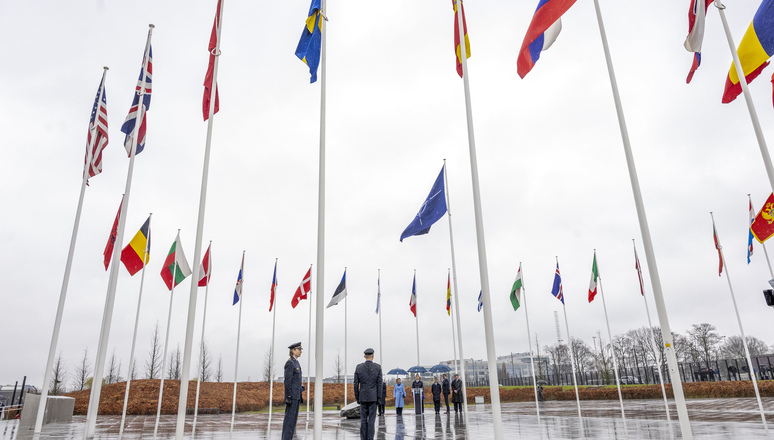In a historic first as a NATO member, Swedish JAS-39 Gripen aircraft took to the skies over the Baltic Sea under NATO arrangements, alongside German Eurofighters and Belgian F-16 quick-reaction alert planes, to intercept Russian aircraft.
The NATO air command disclosed this development on March 11, highlighting the successful integration of Gripen jets with NATO forces during their interception of a Russian AN-29 and TU-134, alongside Belgian F-16s and German Eurofighters.
The military alliance emphasized in a statement that this quick, coordinated response of NATO aircraft from Belgium, Germany, and Sweden to protect the Baltic Sea region underscores the Alliance’s close integration and effective command and control structures.
On the morning of March 11, Allied radar operators detected an unidentified aircraft flying from Kaliningrad to mainland Russia over the Baltic Sea. Subsequently, controllers at NATO’s Combined Air Operations Centre (CAOC) at Uedem coordinated the launch of Swedish NATO jets and ordered Belgian F-16s to launch from Šiauliai Air Base in Lithuania.
Both Allies visually confirmed the presence of a Russian Tu-134 deviating from its flight plan. Later that day, NATO radar detected another Russian An-26, prompting the CAOC to alert German Quick Reaction Alert Interceptors at Lielvarde to launch and gather further information.
🇸🇪 Gripen prove their already integrated with their intercept today of a 🇷🇺 AN-29 & TU-134 together with 🇧🇪 F-16 & 🇩🇪 Eurofighters
Across #NATO the 🇸🇪 flag has been raised in honour of being the 32nd member of the Alliance
Read more: https://t.co/WlRW1IaVYh#SecuringTheSkies pic.twitter.com/isPgrhPmpf
— NATO Air Command (@NATO_AIRCOM) March 11, 2024
Swedish JAS-39 Gripen jets were also dispatched, and both Allies visually identified the Russian military aircraft and escorted it until the mission was completed.
Following these routine visual identification procedures, NATO jets from Belgium, Germany, and Sweden returned to their respective bases.
This first operational mission of Swedish Gripen aircraft occurred shortly after Sweden’s NATO accession, showcasing the seamless integration achieved between the Swedish Air Force and NATO Air Policing forces, thereby enhancing interoperability in safeguarding the Baltic Sea region.
While Swedish Gripen jets have a track record of frequently participating in missions coordinated with NATO to intercept Russian military aircraft over the Baltic Sea, the latest interception represents a noteworthy milestone.
Since becoming a NATO member, this was the first instance that Swedish JAS-39 Gripen jets were deployed to protect the skies over the Baltic Sea.
In addition, two other NATO member countries, Hungary and the Czech Republic, also operate Saab JAS-39C Gripens and have regularly deployed them in support of NATO’s Baltic Air Policing initiative.
Swedish Flag Flies High At NATO Headquarters
On March 11, Sweden’s national flag was ceremoniously raised at NATO headquarters, marking the Nordic country’s formal entry as the 32nd member.
This historic decision comes two years after Russia’s invasion of Ukraine shook the region and spurred Sweden to seek the protection of NATO’s security umbrella.
Sweden’s national flag was raised alongside other member nations during a solemn ceremony at NATO headquarters in Brussels.

Swedish Prime Minister Ulf Kristersson, Crown Princess Victoria, and NATO Secretary-General Jens Stoltenberg witnessed the ascent of the blue banner, embellished with a yellow cross.
Kristersson said, “The Russian, brutal, full-scale invasion against Ukraine united Sweden behind the conclusion that a full-fledged NATO membership is the only reasonable choice.”

Sweden’s accession to NATO marks a departure from decades of post-World War II neutrality. Its neighbor, Finland, had taken a similar step when it joined the alliance in April 2023, ending years of military nonalignment.
In response to Sweden’s membership, Finland’s defense ministry welcomed its Scandinavian counterpart as “our brothers and sisters in arms,” signaling a new era of cooperation between the two countries.
The decision to seek NATO membership gained momentum in Sweden and Finland following Russian President Vladimir Putin’s decision to deploy troops into Ukraine in February 2022.
Putin’s reasoning, which centered on concerns about NATO’s eastward expansion, swiftly catalyzed a change in public sentiment in both Sweden and Finland.
Despite Putin’s efforts to curtail NATO’s influence, the conflict in Ukraine bolstered the alliance’s appeal, leading more countries to seek membership. NATO leaders have pledged eventual membership for Ukraine, although the prospect remains uncertain amidst ongoing hostilities.
Stoltenberg emphasized NATO’s resilience and expansion, stating, “NATO is now bigger and stronger. Ukraine is closer to NATO than ever before, and as the brave Ukrainians continue to fight for their freedom, we stand by their side.”
Sweden contributes well-trained and equipped armed forces to NATO. It has collaborated closely with the alliance in military exercises for years, particularly intensifying efforts since Russia’s full-scale invasion.
With Sweden’s accession, NATO forms a strategic perimeter around the Baltic Sea, offering collective security under Article 5 of the alliance’s treaty: a commitment to mutual defense against aggression.
- Contact the author at ashishmichel(at)gmail.com
- Follow EurAsian Times on Google News




